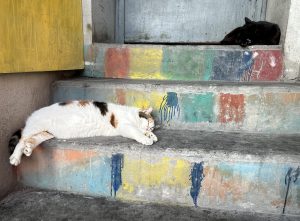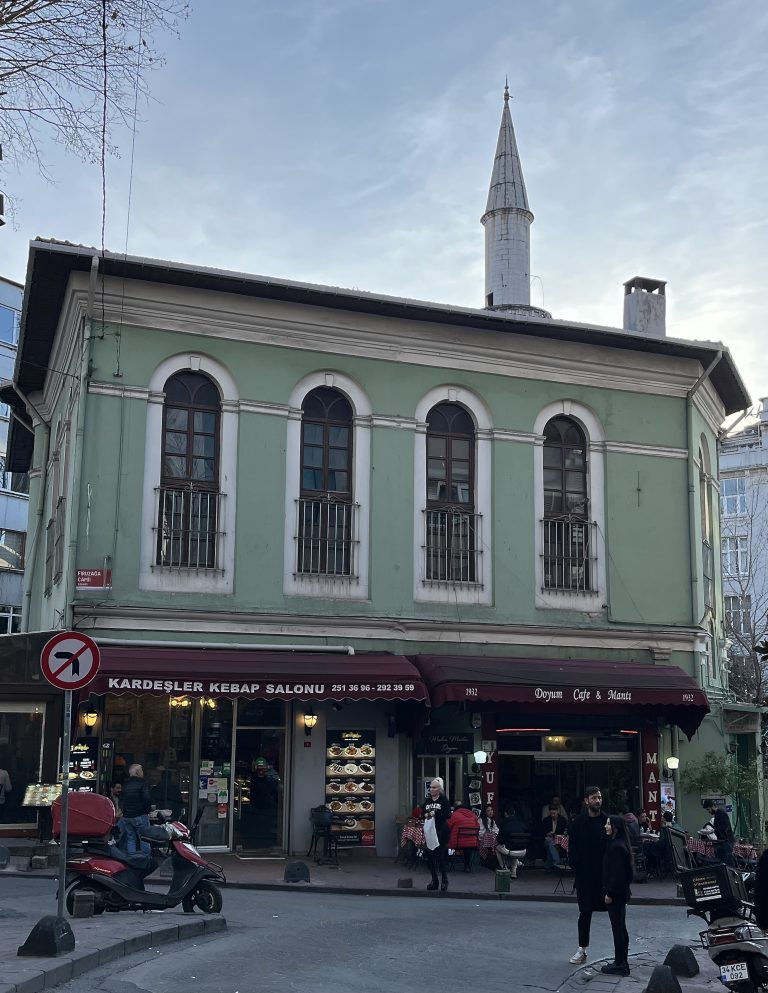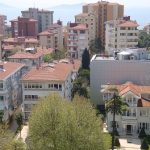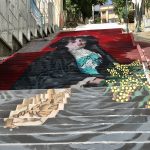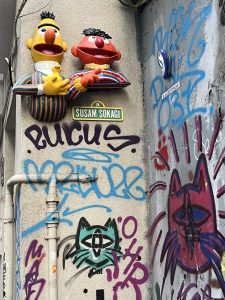
Cihangir is to İstanbul expats what Sultanahmet is to its tourists – the number one place to be. At least, it’s the number one place to be for the footloose and fancy-free who love its proximity to the bright lights of İstiklal Caddesi and excellent transport connections. And it’s the number one place to be for those with deep pockets, rents and property values having soared in recent years as its star rose ever higher on the back of an influx of emigre Russians and a flood of Airbnbs. That over-popularity may now have peaked as the government took steps to curb the conversion of apartments into tourist accommodation and as the Russians moved elsewhere. Many young people in search of a livelier life had already voted with their heels and headed across the water to Kadıköy/Yeldeğirmen in the aftermath of the Gezi uproar anyway.
To find Cihangir you head for Taksim Square, then take Sıraselviler Caddesi, the narrow, traffic-choked street that runs down towards the Bosphorus at an oblique angle to İstiklal Caddesi. The street is lined with hotels, restaurants, supermarkets and even the odd delicatessen although making your way along it can be a trial at busy times of day.
There are no great sights to see here, just the odd vaguely interesting mosque and museum. Instead this is a place to come to eat, drink and make merry in the company of friends, paying passing attention as you do so to the fine 19th-century architecture of an area that once housed the better-off of the people employed along İstiklal Caddesi.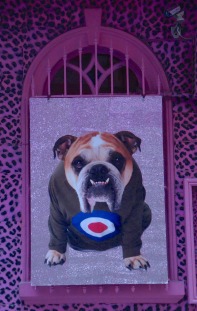
Around Cihangir
As you head down Sıraselviler you will have the huge dome and towers of Hagia Triada soaring up behind the kebab restaurants on your right. On the left is the Taksim Sahnesi, a dilapidated Giulio Mongeri buidling that once housed İstanbul’s first cinema and has now been converted into a branch of Sofitel.
Just past it is the soot-blackened building that used to house first the British Embassy and then the Romanian Consulate. Set back from the street the fine 19th-century Belgian Consulate was the work of a Greek architect named Kampanaki.
To get to Hagia Triada you need to turn right along Meşelik Sokak which is home to two 19th-century schools facing each other across the street: the Greek Zappion and the Armenian Eseyan. The main entrance to the Greek Orthodox Church of Hagia Triada (Holy Trinity) is at the end of the road on the right – you approach via an inviting garden.
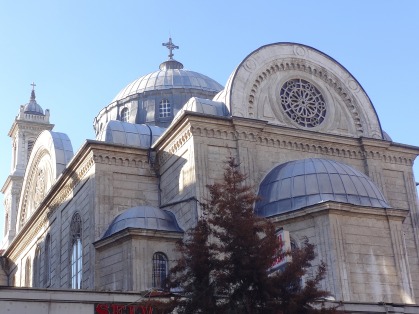 Hagia Triada stands in marked contrast to most of the churches off İstiklal Caddesi such as Santa Maria Draperis that were forced by law to keep a low profile. In the late 19th century the law prohibiting churches from having lofty towers and domes was scrapped and in 1880 Vasilaki Ioannidi designed Hagia Triada to feature one of the first conspicuous church domes since the collapse of Byzantium in 1453. The church is painted white and sky-blue although very often you will only be able to get into its icon-filled narthex.
Hagia Triada stands in marked contrast to most of the churches off İstiklal Caddesi such as Santa Maria Draperis that were forced by law to keep a low profile. In the late 19th century the law prohibiting churches from having lofty towers and domes was scrapped and in 1880 Vasilaki Ioannidi designed Hagia Triada to feature one of the first conspicuous church domes since the collapse of Byzantium in 1453. The church is painted white and sky-blue although very often you will only be able to get into its icon-filled narthex.
Continue down Sıraselviler Caddesi and you will pass the İstanbul Kent University created out of what was once the German Hospital. You then come to a road junction dominated by the Firuz Ağa Cami, AKA the Green Mosque. The current building, a rebuild of a 15th-century mosque dating back to 1823, is raised up above a trio of teahouses that are the main local meeting place, busy at all times of day. Tucked up at the back is a metal fountain, one of a series created for the city during the reign of Sultan Abdülhamid II.
On the left Akarsu Caddesi heads towards the Bosphorus passing the small and rarely visited Orhan Kemal Museum. This homage to an author (1914-70) some of whose books have been translated into English used to come attached to a replica of the İkbal Kahvesi, a popular literary hangout in Nurosmaniye near the Kapalı Çarşı which has been torn down. However, it has now been turned into a restaurant.
The museum contains a set of first editions of Kemal’s books, a mock-up of the room in which he used to work and intriguing photographs of the author with other literary greats including Nazım Hikmet with whom he spent time in prison in Bursa.
At the end of Akarsu Caddesi steps lead down to Tophane. If you turn right at the top of them you will come eventually to Cihangir Park, a scruffy piece of land with a spectacular view down onto Tophane, the Galataport and Sarayburnu. There’s a pleasant tea-house in a faux Ottoman building here although landing a seat is not easy.
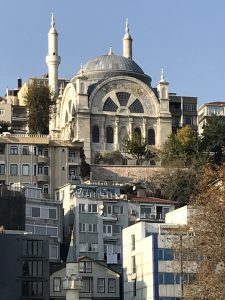 Cihangir’s finest mosque is the Bosphorus-facing Cihangir Cami on Cihangir Yokuşu which was built in 1874 on the site of a long-lost Sinan work dating back to the 16th century. That had been built in memory of Sultan Süleyman the Magnificent’s son Cihangir who had died in 1553 not long after the murder of his half-brother Mustafa on the instructions of their father. The current mosque looks so like the ones at Ortaköy and Dolmabahçe that one is tempted to assume that it too was designed by one of the prolific family of architects, the Balyans. However, the architect’s name remains unknown. The view of the Bosphorus from the small garden is spell-binding.
Cihangir’s finest mosque is the Bosphorus-facing Cihangir Cami on Cihangir Yokuşu which was built in 1874 on the site of a long-lost Sinan work dating back to the 16th century. That had been built in memory of Sultan Süleyman the Magnificent’s son Cihangir who had died in 1553 not long after the murder of his half-brother Mustafa on the instructions of their father. The current mosque looks so like the ones at Ortaköy and Dolmabahçe that one is tempted to assume that it too was designed by one of the prolific family of architects, the Balyans. However, the architect’s name remains unknown. The view of the Bosphorus from the small garden is spell-binding.
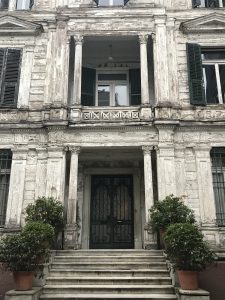
If you leave the mosque via its back gate you will see across the road and to the left the elegant Sadık Paşa Konağı, commissioned in 1850 by a Polish count called Michal Czajkowski who converted to Islam and took the name Mehmet Sadık Paşa. He lived in it until 1872 then sold it to the arms trader, August Hüber. For a year it served as the Japanese Consulate before becoming an American Culture and Art School. In the 2000s it appeared in a number of TV series and films and was used for art exhibitions. In 2021 it was apparently sold again although it still appears to be standing empty.
Beyond the Firuz Ağa Cami, Sıraselviler Caddesi turns into Defterdar Caddesi and starts the descent to Tophane. On the opposite side to Akarsu Caddesi another steep hill leads down to Çukurcuma, a popular antique-hunting neighbourhood.
Eating
This is a particularly good area to come if you want a choice of places to eat and drink to suit most budgets. In summer Akarsu Caddesi turns into Party Central, with street dancing going on into the early hours.
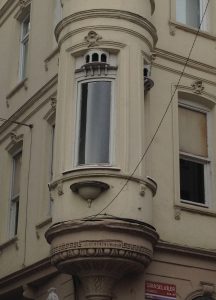
Cuppa Not, as you might assume, a café focused on selling cups of British tea but rather a broad-brush café serving excellent fresh juices to go with good salads and pizzas in the sort of surroundings that encourage you to come with your laptop and stay all day. And “Cuppa”? The sound a Turkish kid makes when jumping into a swimming pool apparently. Yeni Yuva Sokak No. 26 Tel: 0212-249 57 23
Demeti A popular Armenian meyhane in a great location overlooking the Bosphorus. Come here to tuck into mezes washed down with rakı without worrying too much about main courses – keep a vague eye on the bill though. The décor will remind you of your great aunt’s living room. Şimşirci Sokak No. 6/1, Tel: 0212-244 0628
Erciyes Kitabevi & Café Want to take the weight off your feet with coffee and cake in a room rather like a private library? Then this will be the perfect place for you. Sıraselviler Caddesi, Şen Apt No. 32/2, Tel: 0212-245 66 87
Journey Playing to a well-travelled local clientele, this cheerful, open-fronted café serves beautifully cooked pizzas and other international staples in a room designed to evoke the wider world. Akarsu Caddesi No. 21/A, Tel: 0212-244 89 89
Kahve6 My favourite place to go for an informal meal or just a quick coffee is this lovely little garden restaurant tucked away in a side street off Akarsu. It’s colourful and inviting, and the food’s great as is the service. Akarsu Caddesi, Anahtar Sokak No. 13/A, Tel: 0212-293 0849
Sleeping
AKKA Lush Hotel. Tel: 0212-243 9595
Hotel Villa Zurich. Tel: 0212-293 0604
Vardar Palace. Tel: 0212-252 2888
Transport info
The easiest way to get to Cihangir from Sultanahmet is to take the tram to Kabataş and the funicular to Taksim. You can then walk downhill along Sıraselviler Caddesi. If you get out of the tram at Tophane you can also walk up Defterdar Caddesi – but it’s a very steep climb.
Nearby areas
